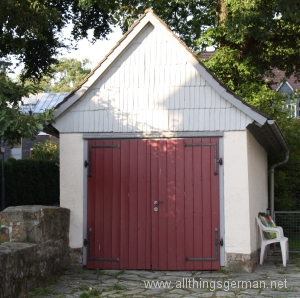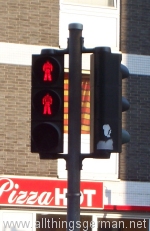 With the invention of the garage towards the end of the 1930s, the next logical step (in Germany, at least) was to create a law governing them.
With the invention of the garage towards the end of the 1930s, the next logical step (in Germany, at least) was to create a law governing them.
It was called the Reichsgaragenordnung and came into effect in 1939. And yes, it is still on the German statute book and valid to this day!
I first came across the name in the Hausordnung (house rules) for one of the flats that I lived in.
Im übrigen ist jeder Garageneigentümer zur strengen Beachtung der Reichsgaragenordnung verpflichtet.
But which rules does this law actually contain?
Well, the most important part is used by planning departments to determine how many parking spaces are needed for a new building. If you build a block of flats, the law determines how many parking spaces you need to provide for the residents.
It also applies when you modernise a building, often causing parking spaces to be located on previously green sites due to lack of available land. In some cases, the owners end up paying for the parking spaces to be created elsewhere in the town.
It is irrelevant whether the tenants actually own or even use that number of cars.
In Austria, where the law is also still valid, it prohibits tenants from keeping mopeds in their flats.
The 203-page law apparently also deals with what you are allowed to store in your garage, winter tyres for example.
One might go as far as seeing this as being typical for Germany – a law for everything! Personally, I am always fascinated to find laws like this one that did not get revised with the creation of the Federal Republic in 1949.


